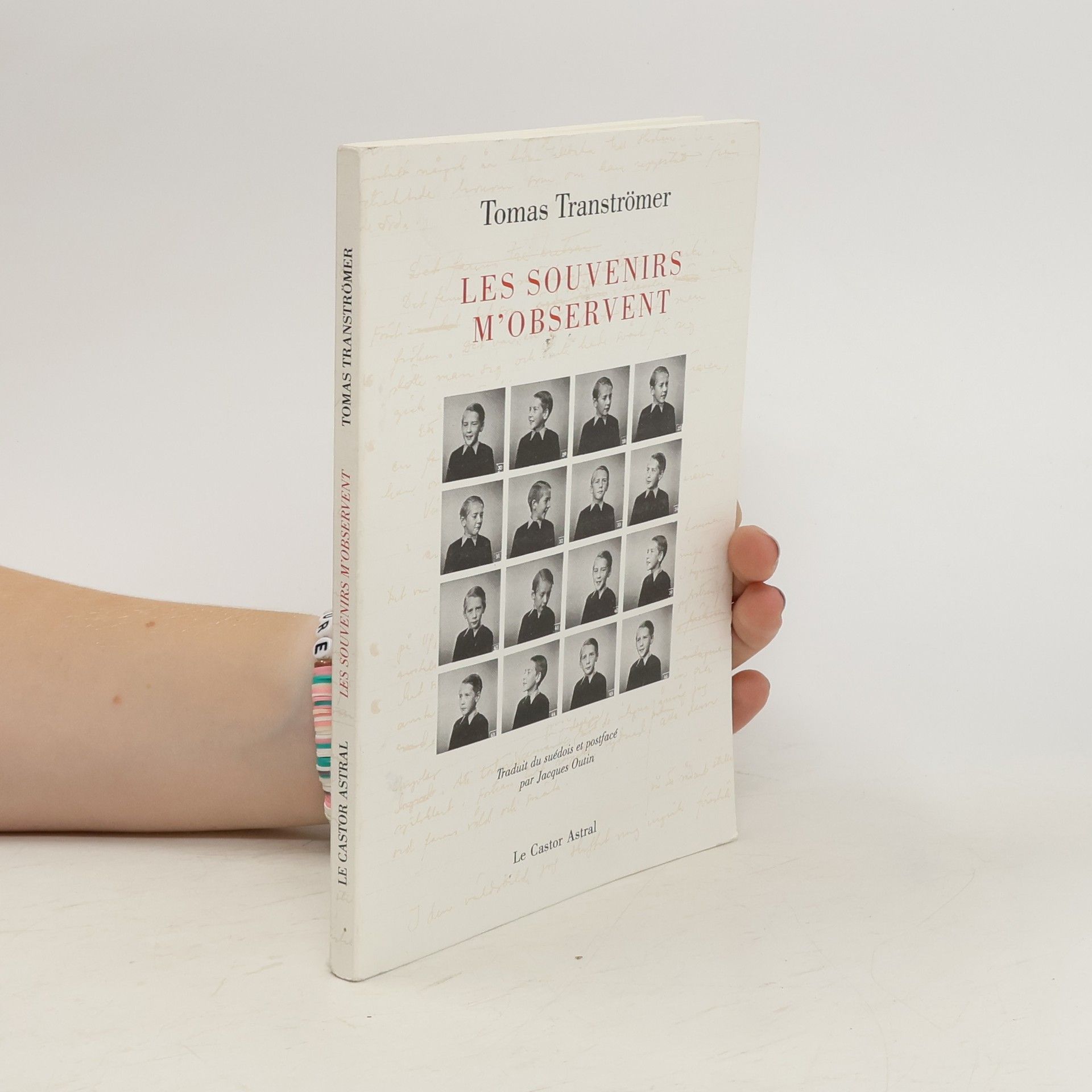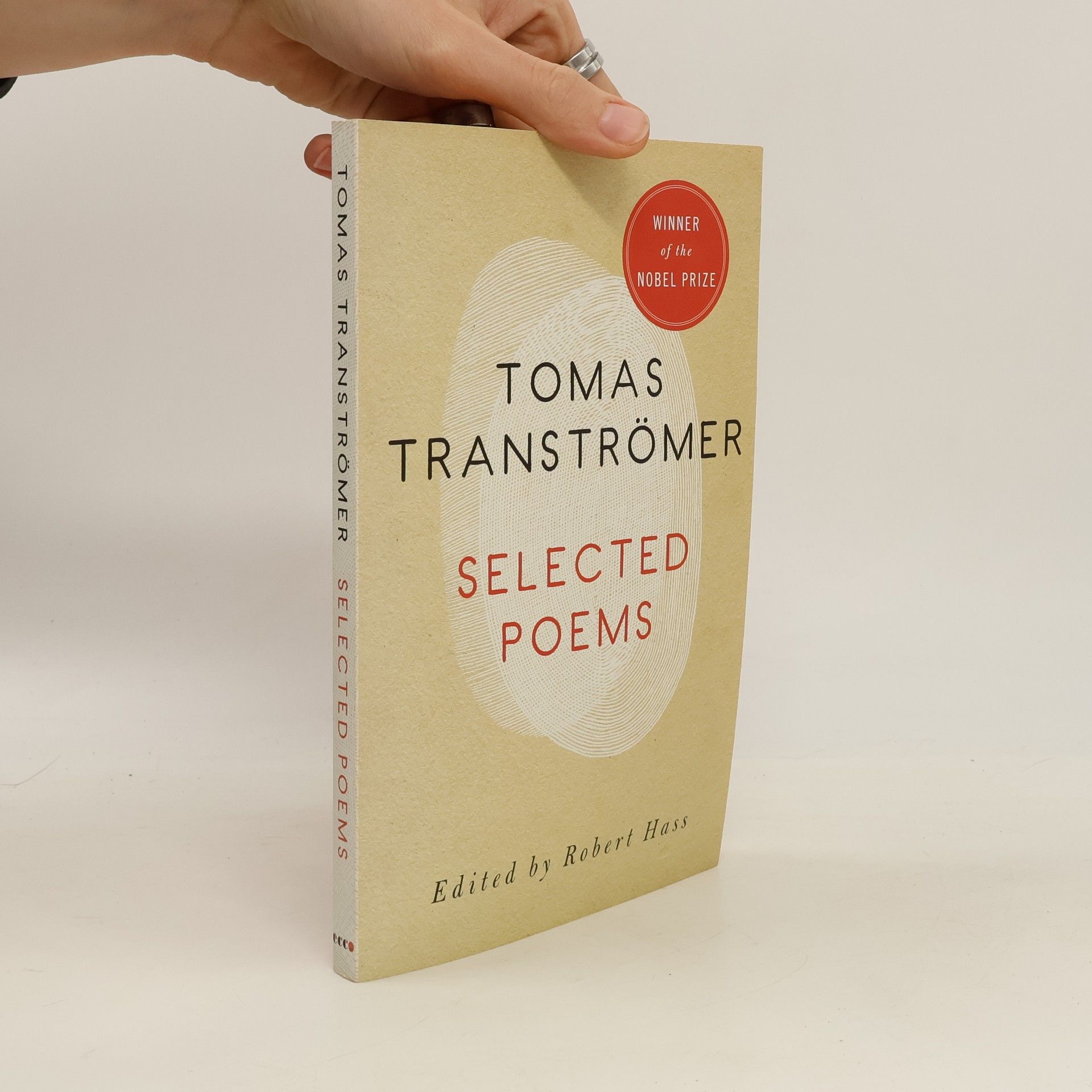Ce recueil de proses poétiques nous fait participer de manière fragmentaire à la petite enfance et à l’adolescence de Tomas Tranströmer, périodes les plus marquantes de notre vie selon lui. Dans cette chronique concise des années d’apprentissage, le poète révèle les voyages métaphoriques entre divers états de réalité et de conscience, ainsi que son passage secret vers l’écriture de l’âge adulte.
Tomas Tranströmer Livres
Sa poésie, s'appuyant sur le modernisme, l'expressionnisme et le surréalisme, présente des images puissantes axées sur la fragmentation et l'isolement. Il a perfectionné un type particulier de lyrisme épiphanique, souvent en quatrains, où la nature est le sujet actif et énergisant, et le moi (s'il est présent) est l'objet. Ses images condensées et translucides offrent aux lecteurs un nouvel accès à la réalité, imaginant des espaces habités par le profond, comme l'eau souterraine jaillissant dans un puits nouvellement creusé.







Tomas Transtromer won the 2011 Nobel Prize in Literature. He is Sweden's most important poet. This book includes all the poems he has written during the past fifty years. Robin Fulton's translation is the most authoritative and comprehensive edition of his poetry published anywhere.
The Great Enigma: New Collected Poems compiles the complete works of Tomas Transtromer, showcasing his profound poetry that resonates globally. From his first collection in 1954 to his latest works, Transtromer’s verses explore the interplay of nature, dreams, and spirituality, offering deep insights into the human experience.
The Deleted World: Poems
- 41pages
- 2 heures de lecture
Originally published: London: Enitharmon Press, 2006.
The Half-Finished Heaven
- 144pages
- 6 heures de lecture
Over the course of his career, Tomas Tranströmer - a poet who could look on the barren isolation of Sweden's landscapes and seascapes like no other, and find in them something hauntingly transcendent - emerged as one of the 20th century's essential global voices. By the time he won the Nobel Prize in Literature in 2011, his luminous, almost mystical work had been translated into more than 50 languages. Gathering his poems from the early, nature-focused work to the later poetry's widening of the scope to take in painting, travel, urban life, and the impositions of technology on the natural world, and stirred throughout by the poet's profound love of music, The Half-Finished Heaven is a unique selection from Tranströmer's work. It is also, in its way, a deeply intimate one: the poems hand-picked here are not only the most beloved, but also those which were translated in the course of Tranströmer's nearly thirty-year correspondence with his close friend and collaborator, the American poet Robert Bly. Few names are more strongly associated with Tranströmer's; and few people have understood not only his poetry, but the processes behind it, more profoundly. The result is perhaps the best English-language introduction to this great and strange poet's work that there could be.
Inspired Notes
- 69pages
- 3 heures de lecture
News that the 2011 Nobel Prize for Literature had been awarded to the Swedish poet Tomas Tranströmer was greeted with widespread approval by poets and poetry readers the world over. The author of fifteen collections of poems, Tranströmer had in fact been nominated for the prize every year since 1993, a sign of his huge standing and importance in world poetry, undiminished in recent years despite a stroke in 1990 that left him partially paralyzed and unable to speak. The Nobel citation praised Tranströmer's poems of "condensed, translucent images" which give us "fresh access to reality", and that startling originality is everywhere to be seen in the poems gathered here, first published as two separate volumes by the Dedalus Press, The Wild Marketplace (1985) and For the Living and the Dead (1994), both translated by John F. Deane, the latter in collaboration with the poet himself.
Nobel Prize-winner Tomas Tranströmer explores the personal and political, the ecological and existential, through poems that expand like the widening scope of a telephoto lens. With slow strokes and subtle, rich lines, The Blue House: Collected Works of Tomas Tranströmer is evidence of a Nobel Prize-winning poet tracing the world with his pen. A stunning testament to an illustrious career, The Blue House gathers poems and writings from Tranströmer's fourteen collections into a single book. Original Swedish sits alongside their English translations as Patty Crane translates his words into revelatory language acute in the understanding of human change and loss. Subtle in politics and exact in imagery, the poems of The Blue House range from agile haiku to cinematic prose. Social phenomena are observed in rich detail--a "dictator's bust" presiding over a train car of doomed passengers--and the collection is propelled by empathy and curiosity. Under Tranströmer's watchful eye, no subject is overlooked: Milij Balakirev, the Russian composer; Nils Dacke, the Swedish peasant who led a rebellion against the king; and him, the stranger who forgets his name by the roadside. From the personal to the political to the existential, Tranströmer's poems act as a telephoto lens, granting us reinvigorated access to the world we live in.
Penguin Modern European Poets: Paavo Haavikko and Tomas Tranströmer
Selected Poems
- 141pages
- 5 heures de lecture
The 1950s saw a major breakthrough in Finnish poetry when such modernists as Paavo Haavikko turned away from national idealism. The poetry of Haavikko, who has emerged as the most original of these poets, is remarkable for its lyricism and exceptionally direct imagery.Tomas Tranströmer, a contemporary Swedish poet, draws on a long tradition of Swedish nature poetry, and combines a wide viewpoint with a sharp focus on particular details. This selection ranges from his early, somewhat mystical poems to his later, more explicit work.
Selected Poems
- 206pages
- 8 heures de lecture
Tomas TranstrÖmer's poems are thick with the feel of life lived in a specific place: the dark, overpowering Swedish winters, the long thaws and brief paradisal summers in the Stockholm archipelago. He conveys a sense of what it is like to be a private citizen in the second half of the twentieth century.
Laureát Nobelovy ceny za literaturu, osmdesátník Tomas Tranströmer (nar. 1931) je jako básník známý po celém světě – jeho básně vyšly v překladech do 60 jazyků, přičemž jen v angličtině existuje víc než 20 vydání jeho veršů. Nepříliš známý či úplně neznámý je v Evropě zřejmě jen v České republice, protože do češtiny bylo přeloženo jen asi deset jeho básní, v jedné antologii a v časopisech. Tranströmerova silná a vznešená poezie z něj dokonce udělala kultovního autora: ve Slovinsku a na Dálném východě existuje několik kaváren, které nesou jeho jméno. Ve Švédsku a na severu vůbec je tento básník miláčkem početného čtenářského publika. Jeho verše i básníka osobně však znají i na Slovensku, kde vydali jeho sebrané básně a kam přijel, aby převzal Cenu Jána Smreka. V Bratislavě se Tranströmer seznámil s několika českými básníky, L. Kunderou, J. Štroblovou, J. Hrubým a J. Žáčkem.


